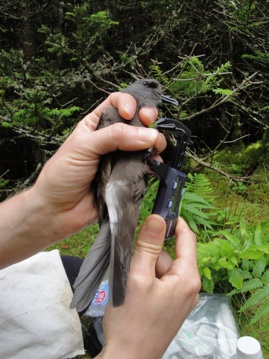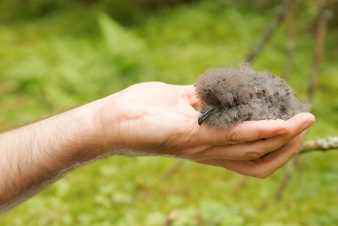marine organism-environment interaction
Personal odors can be influenced by genes of the major histocompatibility complex (MHC), which is a cluster of genes essential for immune function. These odors impact recognition and preference in mammals, lizards and fish, but whether MHC-associated odors could play a similar role in birds is currently not known.
The tube-nosed seabirds (Order: Procellariiformes) are an ideal group for investigating this possibility. Our prior work has characterized their remarkable sense of smell, and we have previously shown that some species can tell each other apart using only odors. This latest finding suggests that personal scent may play a role in social behaviors, which, until now, has not been seriously considered in birds.
We are now working with Scott Edwards’ group (Department of Organismal and Evolutionary Biology, Harvard University) to investigate this problem using the Leach's storm-petrel (Oceanodroma leucorhoa) as a model system. Scott is a leader in the area of avian genetics and MHC and has been a great person to team up with for this study. This work is being conducted at our study site on Bon Portage Island in Nova Scotia, which is affiliated with Acadia University and the Nova Scotia Nature Trust.
Results showing that birds can either detect MHC odors or use them to choose mates would represent a paradigm shift in how biologists typically view mate choice decisions in birds. Just as importantly, many species of petrels and albatrosses are facing extinction, and understanding the factors driving mate choice and colony demographics will make a valuable contribution to comprehensive management plans for endangered species.
Molecular mechanisms of mate-choice and individual odor recognition in a burrow-nesting petrel: a new frontier in avian biology



